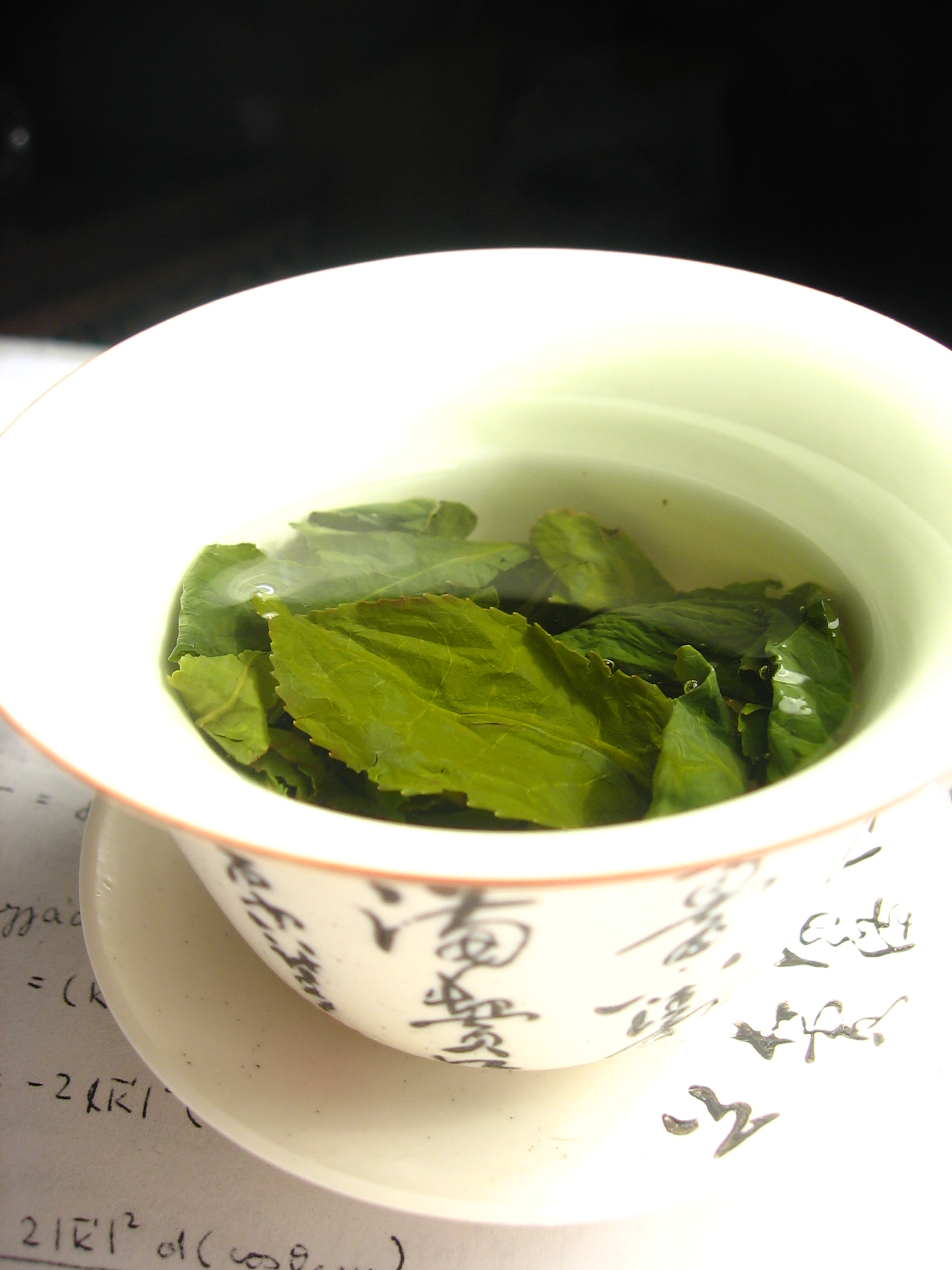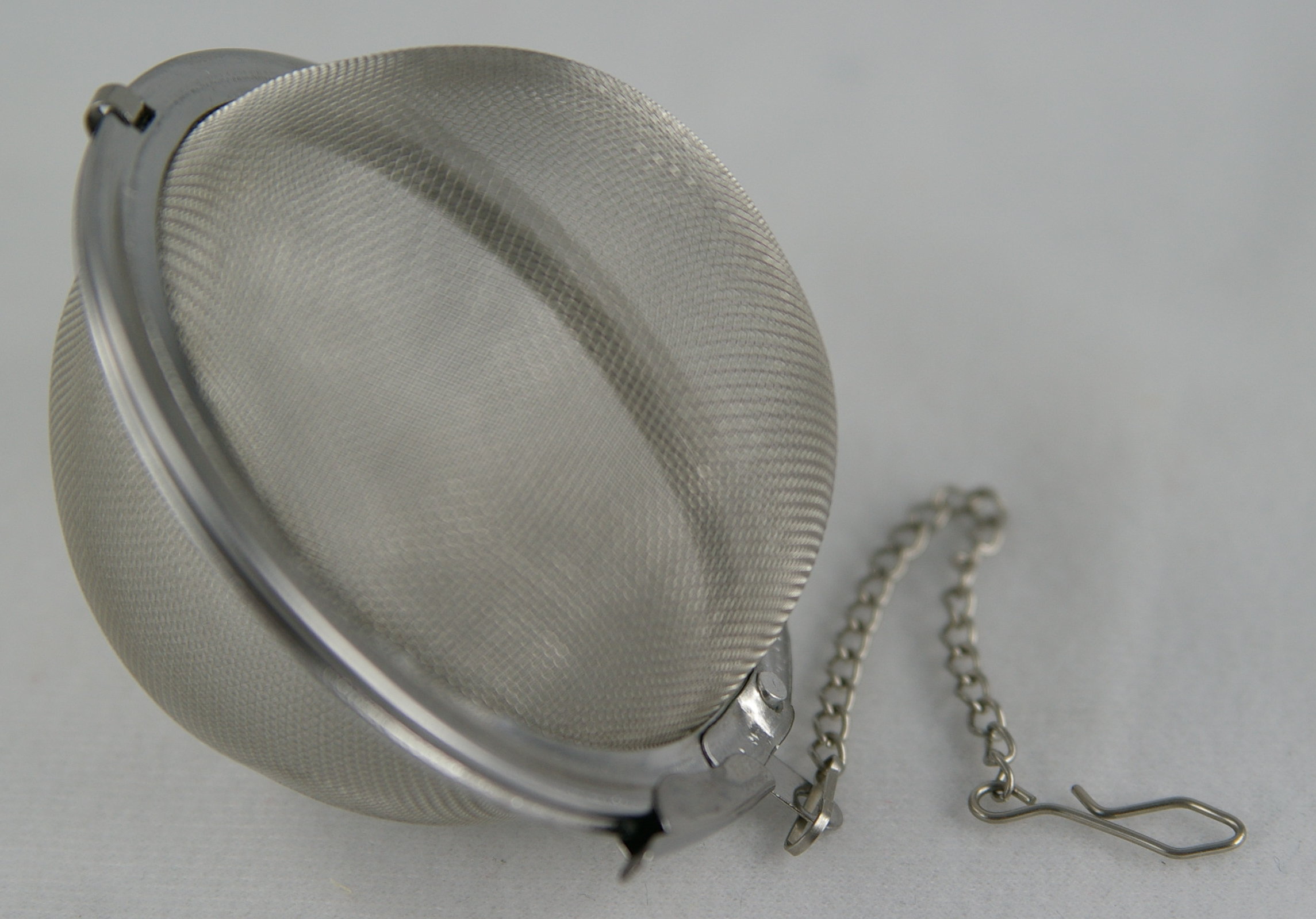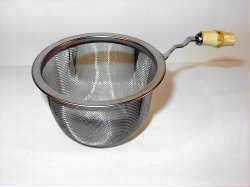|
Steeping
Steeping is the soaking of an organic solid, such as leaves, in a liquid (usually water) to extract flavours or to soften it. The specific process of teas being prepared for drinking by leaving the leaves in heated water to release the flavour and nutrients is known as steeping. Herbal teas may be prepared by decoction, infusion, or maceration. Some solids are soaked to remove an ingredient, such as salt, where the solute is not the desired product. Corn One example is the steeping of corn (or maize), part of the milling process. As described by the US Corn Refiners Association, harvested kernels of corn are cleaned and then steeped in water at a temperature of for 30 to 40 hours. In the process their moisture content rises from 15% to 45% and their volume more than doubles. The gluten bonds in the corn are weakened and starch is released. The corn is then ground to break free the germ and other components, and the water used (steepwater), which has absorbed various nutrient ... [...More Info...] [...Related Items...] OR: [Wikipedia] [Google] [Baidu] |
Malting
Malting is the process of steeping, germinating and drying grain to convert it into malt. The malt is mainly used for brewing or whisky making, but can also be used to make malt vinegar or malt extract. Various grains are used for malting, most often barley, sorghum, wheat or rye. Several types of equipment can be used to produce the malt. Traditional floor malting germinates the grains in a thin layer on a solid floor, and the grain is manually raked and turned to keep the grains loose and aerated. In a modern malt house the process is more automated, and the grain is germinated on a floor that is slotted to allow air to be forced through the grain bed. Large mechanical turners, e.g., Saladin boxes, keep the much thicker bed loose with higher productivity and better energy efficiency. Intake The grain is received at the malt house from the farmer. It is taken in from the field and cleaned (dressed), and dried if necessary, to ensure the grain remains in the best condition ... [...More Info...] [...Related Items...] OR: [Wikipedia] [Google] [Baidu] |
Tea Leaves Steeping In A Zhong čaj 05
Tea is an aromatic beverage prepared by pouring hot or boiling water over cured or fresh leaves of ''Camellia sinensis'', an evergreen shrub native to East Asia which probably originated in the borderlands of southwestern China and northern Myanmar. Tea is also rarely made from the leaves of ''Camellia taliensis''. After plain water, tea is the most widely consumed drink in the world. There are many different types of tea; some have a cooling, slightly bitter, and astringent flavour, while others have vastly different profiles that include sweet, nutty, floral, or grassy notes. Tea has a stimulating effect in humans primarily due to its caffeine content. An early credible record of tea drinking dates to the third century AD, in a medical text written by Chinese physician Hua Tuo. It was popularised as a recreational drink during the Chinese Tang dynasty, and tea drinking subsequently spread to other East Asian countries. Portuguese priests and merchants introduced it to E ... [...More Info...] [...Related Items...] OR: [Wikipedia] [Google] [Baidu] |
Loose Tea
Tea is an aromatic beverage prepared by pouring hot or boiling water over cured or fresh leaves of ''Camellia sinensis'', an evergreen shrub native to East Asia which probably originated in the borderlands of southwestern China and northern Myanmar. Tea is also rarely made from the leaves of ''Camellia taliensis''. After plain water, tea is the most widely consumed drink in the world. There are many different types of tea; some have a cooling, slightly bitter, and astringent flavour, while others have vastly different profiles that include sweet, nutty, floral, or grassy notes. Tea has a stimulating effect in humans primarily due to its caffeine content. An early credible record of tea drinking dates to the third century AD, in a medical text written by Chinese physician Hua Tuo. It was popularised as a recreational drink during the Chinese Tang dynasty, and tea drinking subsequently spread to other East Asian countries. Portuguese priests and merchants introduced it to E ... [...More Info...] [...Related Items...] OR: [Wikipedia] [Google] [Baidu] |
Cooking Techniques
This is a list of cooking techniques commonly used in cooking and food preparation. Cooking is the art of preparing food for ingestion, commonly with the application of heat. Cooking techniques and ingredients vary widely across the world, reflecting unique environments, economics, cultural traditions, and trends. The way that cooking takes place also depends on the skill and type of training of an individual cook. A B C File:Fromagerie gruyères-égouttage-4.jpg, The production of Gruyère cheese at the cheesemaking factory of Gruyères, Canton of Fribourg, Switzerland File:Svadbarski Kupus.jpg, Cooking of Svadbarski Kupus (wedding cabbage) in clay pots, Serbia File:Coddled Egg on hash.jpg, A coddled egg atop hash File:Creaming butter - step 3.JPG, Butter being creamed using electric beaters D ... [...More Info...] [...Related Items...] OR: [Wikipedia] [Google] [Baidu] |
Teapot
A teapot is a vessel used for steeping tea leaves or a herbal mix in boiling or near-boiling water, and for serving the resulting infusion which is called tea. It is one of the core components of teaware. Dry tea is available either in tea bags or as loose tea, in which case a tea infuser or tea strainer may be of some assistance, either to hold the leaves as they steep or to catch the leaves inside the teapot when the tea is poured. Teapots usually have an opening with a lid at their top, where the dry tea and hot water are added, a handle for holding by hand and a spout through which the tea is served. Some teapots have a strainer built-in on the inner edge of the spout. A small air hole in the lid is often created to stop the spout from dripping and splashing when tea is poured. In modern times, a thermally insulating cover called a tea cosy may be used to enhance the steeping process or to prevent the contents of the teapot from cooling too rapidly. History China ... [...More Info...] [...Related Items...] OR: [Wikipedia] [Google] [Baidu] |
Tea Infuser
A tea infuser is a device in which loose, dried tea leaves are placed for steeping or brewing, in a mug or a teapot full of hot water; it is often called a teaball or tea maker, and sometimes a tea egg. The tea infuser gained popularity in the first half of the 19th century. Tea infusers enable one to easily steep tea from fannings and broken leaf teas. Use A tea infuser performs a similar function as a tea bag, a later American invention. The infuser is generally a small mesh or perforated metal container or covered spoon that holds tea leaves, in varying sizes to steep single or multiple servings at once. Common shapes for infusers include spherical, conical and cylindrical. One style of infuser is a split sphere with tongs, tong-like handles to open its mesh container. The infuser is placed in a cup or pot of hot or boiling water, allowing the tea to brew without loose tea leaves spilling into the pot or cup. A rod or chain is commonly attached to the container of the infuser ... [...More Info...] [...Related Items...] OR: [Wikipedia] [Google] [Baidu] |
Infusion
Infusion is the process of extracting chemical compounds or flavors from plant material in a solvent such as water, oil or alcohol, by allowing the material to remain suspended in the solvent over time (a process often called steeping). An infusion is also the name for the resultant liquid. The process of infusion is distinct from both decoction—a method of extraction involving boiling the plant material—and percolation, in which water is passed through the material (as in a coffeemaker). History The first recorded use of essential oils was in the 10th or 11th century by the Persian polymath Avicenna, possibly in ''The Canon of Medicine''. Tea is far older than this, dating back to the 10th century BC as the earliest recorded reference. Preparation techniques Infusion is a chemical process that uses botanicals (typically dried herbs, flowers or berries) that are volatile and release their active ingredients readily in water, oil, or alcohol. In this process, a liquid i ... [...More Info...] [...Related Items...] OR: [Wikipedia] [Google] [Baidu] |
Tea Bag
A tea bag, or the compound teabag, is a small, porous, sealed bag or packet, typically containing tea leaves or the leaves of other herbs, which is immersed in water to steep and make an infusion. Originally used only for tea ('' Camellia sinensis''), they are now made with other tisanes ("herbal teas") as well. Tea bags are commonly made of filter paper or food-grade plastic, or occasionally of silk cotton or silk. The tea bag performs the same function as a tea infuser. Tea bags can be used multiple times until there is no extraction left. Some tea bags have an attached piece of string with a paper label at the top that assists in removing the bag, while also displaying the brand or variety of tea. History Tea bag patents date from 1903 when Roberta Lawson and Mary Molaren, of Milwaukee, Wisconsin, were granted US patent 723287 for a Tea Leaf Holder, which they had filed for in 1901. US patent 723287 was issued on MAR. 24, 1903 to R. G.LAWSON & M. McLAREN for a 'novel t ... [...More Info...] [...Related Items...] OR: [Wikipedia] [Google] [Baidu] |
ISO 3103
ISO 3103 is a standard published by the International Organization for Standardization (commonly referred to as ISO), specifying a standardized method for brewing tea, possibly sampled by the standardized methods described in ISO 1839. It was originally laid down in 1980 as BS 6008:1980 by the British Standards Institution, and a revision was published in December, 2019 as ISO/NP 3103. It was produced by ISO Technical Committee 34 (Food products), Sub-Committee 8 (Tea). The abstract states the following: The method consists in extracting of soluble substances in dried tea leaf Tea is an aromatic beverage prepared by pouring hot or boiling water over cured or fresh leaves of ''Camellia sinensis'', an evergreen shrub native to East Asia which probably originated in the borderlands of southwestern China and norther ..., contained in a porcelain or earthenware pot, by means of freshly boiling water, pouring of the liquor into a white porcelain or earthenware bowl, observatio ... [...More Info...] [...Related Items...] OR: [Wikipedia] [Google] [Baidu] |
Herbal Tea
Herbal teas, also known as herbal infusions and less commonly called tisanes (UK and US , US also ), are beverages made from the infusion or decoction of herbs, spices, or other plant material in hot water. Oftentimes herb tea, or the plain term ''tea'', is used as a reference to all sorts of herbal teas. Many herbs are used in herbal medicine. Some herbal blends contain actual tea (e.g., the Indian classic masala chai). The term "herbal" tea is often used in contrast to the so-called ''true'' teas (e.g., black, green, white, yellow, oolong), which are prepared from the cured leaves of the tea plant, '' Camellia sinensis''. Unlike true teas (which are also available decaffeinated), most tisanes do not naturally contain caffeine. There are a number of plants, however, that ''do'' contain caffeine or another stimulant, like theobromine, cocaine or ephedrine. Some have the opposite effect, acting as a sedative. Some common infusions have specific names such as , ''mate'' (ye ... [...More Info...] [...Related Items...] OR: [Wikipedia] [Google] [Baidu] |
Tea Strainer
A tea strainer is a type of strainer that is placed over or in a teacup to catch loose tea leaves. When tea is brewed in the traditional manner in a teapot, the tea leaves are not contained in teabags; rather, they are freely suspended in the water. As the leaves themselves are not consumed with the tea, it is usual to filter them out with a tea strainer. Strainers usually fit into the top of the cup to catch the leaves as the tea is poured. Some deeper tea strainers can also be used to brew single cups of tea, much as teabags or brewing baskets are used the strainer full of leaves is set in a cup to brew the tea. It is then removed, along with the spent tea leaves, when the tea is ready to drink. By using a tea strainer in this way, the same leaves can be used to brew multiple cups. Despite the fact that tea strainer use has declined in the 20th century with mass production of the tea bag, it is still preferred among connoisseurs, who claim that keeping the leaves packed i ... [...More Info...] [...Related Items...] OR: [Wikipedia] [Google] [Baidu] |
Pitcher (container)
In American English, a pitcher is a container with a spout used for storing and pouring liquids. In English-speaking countries outside North America, a jug is any container with a handle and a mouth and spout for liquid – American "pitchers" will be called jugs elsewhere. Generally a pitcher also has a handle, which makes pouring easier. Ewer is an older word for a pitcher or jug of any type, though tending to be used for a vase-shaped pitcher, often decorated, with a base and a flaring spout. The word is now unusual in informal English describing ordinary domestic vessels. A notable ewer is the America's Cup, which is awarded to the winning team of the America's Cup sailing regatta match. In modern British English, the only use of "pitcher" is when beer is sold by the pitcher in bars and restaurants, following the American style. Etymology The word ''pitcher'' comes from the 13th-century Middle English word ''picher'', which means earthen jug. The word ''picher'' is linke ... [...More Info...] [...Related Items...] OR: [Wikipedia] [Google] [Baidu] |









.jpg)